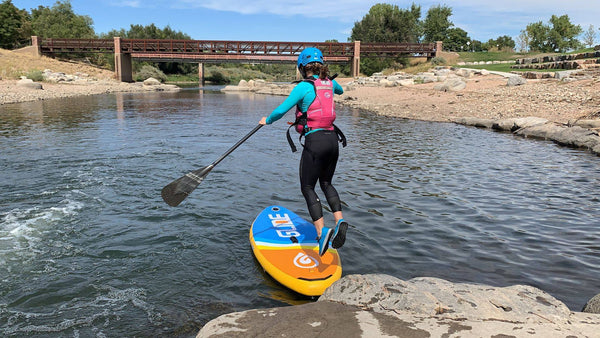
A Guide to Choosing a Paddle Board for Beginners
Venturing into the world of stand-up paddleboarding (SUP) is an exciting step towards adventure on the water. Whether you've just returned from a blissful day of renting a SUP or you've decided it’s time to elevate your paddling game, selecting the right paddle board is crucial. This article aims to distill expert advice to help beginners navigate the process of choosing their first paddle board, setting the stage for future advancements in the sport.
Introduction

Hard vs. Inflatable Boards
Initially, SUP enthusiasts only had rigid boards to choose from. Today, inflatable paddle boards offer a compelling alternative, boasting nearly 90% of the rigidity of hard boards with the added convenience of easy storage and transport. While rigid boards feature an EPS foam core wrapped in fiberglass, inflatable boards are made with woven drop stitch construction and multi-layer PVC, making them durable and portable.
Board Shape and Size
Choosing the right shape and size of your SUP is essential for a fulfilling paddling experience:
- Beginners often benefit from wider boards that provide a stable platform for building confidence.
- Experienced paddlers might prefer narrower, touring boards designed for long-distance paddling on flat water or shorter boards for wave riding.
Hull Types: Planing vs. Displacement on hard paddle boards
The hull shape significantly impacts how a board performs on the water:
- Displacement hulls are designed to cut through water efficiently, ideal for paddlers looking for speed and distance.
- Planing hulls are suited for a more leisurely ride, gliding over the water's surface and offering versatility for various SUP activities.

All-Around SUP Boards
For beginners, an all-around SUP board is often the best choice due to its versatility. These boards can be used for flat water paddling, SUP surfing, yoga, and even whitewater adventures. All-around boards are generally between 10 and 12 feet long, providing a balance of stability and maneuverability.

Paddle Board Size
When selecting a board size, consider your weight, carrying capacity, and intended use. A board that's too small may not provide enough stability, while one that's too large may be difficult to maneuver. For activities like paddle board camping, opt for a longer board to accommodate gear.

Deck Pads
Don't overlook the importance of a comfortable deck pad. A quality pad should cover the length of the board, providing comfort and traction for various activities, from paddling to SUP yoga.

Conclusion
Choosing the right SUP involves considering your paddling style, the types of waterways you'll explore, and your long-term goals in the sport. Whether you opt for a rigid or inflatable board, the key is finding a balance between stability, maneuverability, and portability. With the right board, you're well on your way to countless adventures on the water, perhaps even progressing to specialized disciplines like racing or wave riding.
Remember, the journey from beginner to seasoned paddler is as rewarding as it is challenging. Embrace each step, and before you know it, you might be inspiring the next generation of paddlers with your own expert advice.
Choosing the perfect paddle board for your needs can be a challenge. Everyone wants a board that they will be able to get years of use out of. The key is to figure out what SUP disciplines that you will be using your paddle board for as well as your paddling ability. Make sure that you also have enough room to store your board and the means to transport it properly.
Related Topics
Improving Fitness on Paddle Board
How Many Calories Does SUP Burn?





